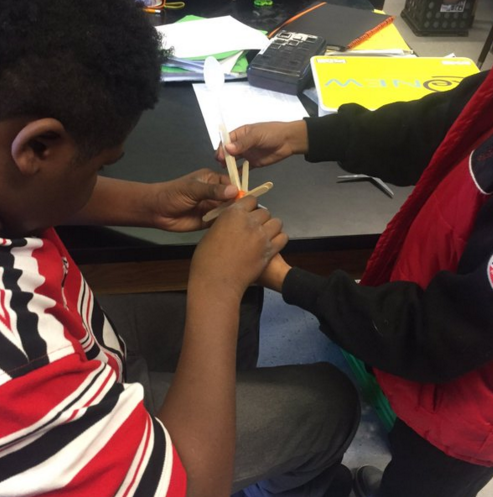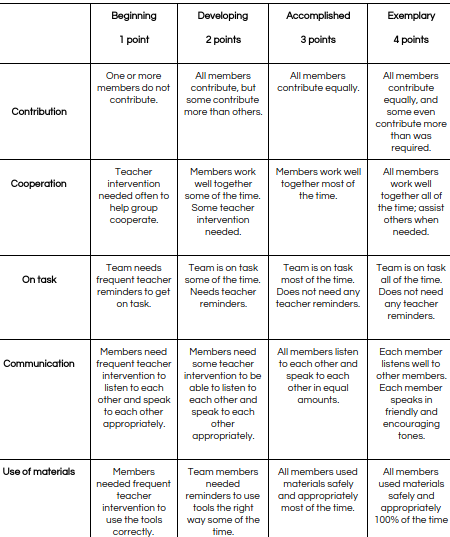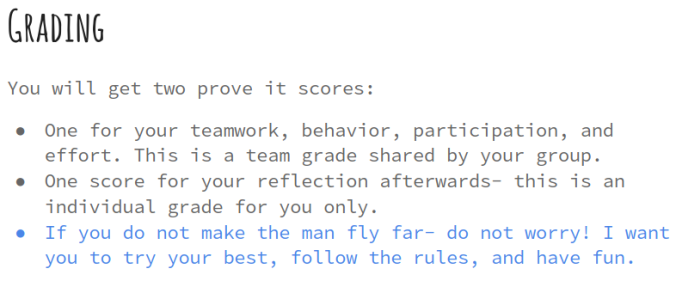
Lately I’m very interested in incorporating more hands on learning in my science classroom that is unique of building a science model or completing an experiment/ investigation. Don’t get me wrong; these practices are very important, but I’m been trying to mix things up! It’s the end of the year and I want to keep my students challenged and engaged.
One thing that has really inspired me is a maker space teacher training I attend every Saturday at the IDIYA Makerspace . These classes are giving me the kick in the butt I need to incorporate more STEM in my classroom. Some things I would ask about before these classes were How would I grade the students? How would I keep them from going off in my small, boxy classroom? How would I keep them on track?
Assessment and expectations

This simple rubric keeps my students on task and I am able to forget about management and circulate while asking probing questions to each group.
I use a rubric that I found online and edited to grade the students’ as a team. Each team has this rubric sitting between them during every STEM challenge. Before each challenge begins, I have the entire class review the rubric. This keeps the expectations fresh in their heads even though they have seen it before. As I circulate the room, I put a dot each time they have to be reminded of something in any of the categories. I also add positive comments and notes so that I can remember small details as I give them feedback afterwards. Towards the end of the challenge, I circle each box for the points they earn. This is a shared grade.

Screen shot of my presentation. Prove Its are what we call exit tickets.
After the challenge, the students reflect on their experience. This is really important and helps the students candidly participate in a whole group or small group discussion about the challenge. The reflection writing piece asks students about what worked well, what didn’t work well, and what advice would they give another student about to complete this challenge? I make it very clear before they start that even if their design is unsuccessful, they will be successful if they collaborate, try their best, and get creative.The reflective piece is done individually at level 0, and students may listen to classical music or jazz on their Chromebooks as they write.
Management
I have great success with management on my STEM challenge Fridays. I think one reason is that students are so engaged and excited by the materials. Going over the expectations each class and having a rubric we review that is visible both on the board as well as on the table of each group also plays a huge role in successful STEM days. Once the students begin their work, I can forget about keeping things in order and actually focus on teaching and asking Socratic style questions (Side note- I accidentally typed “socrative” the first time around… yas #EdTech!).
Ready to start? These links include directions, materials, and procedures:
How does the design of our catapult affect the distance the figurine travels?
How can we save Sam?
How can we save Sam? Packet with questions
STEM on!